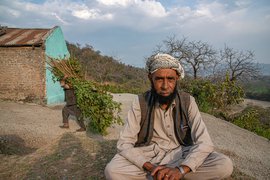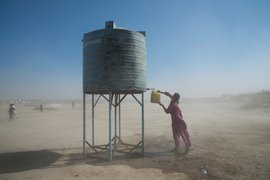“I have seen all kind of storms, but this one was different. It went on for almost 12 hours. In the afternoon, water rushed into the fields like a mad bull chasing us. I picked up my brother's disabled son and ran,” recounts Swapan Nayek, a primary school teacher in Dakshin Kasiabad village in West Bengal’s Sundarbans region.
On May 20, with wind speeds raging up to 185 kmph, Cyclone Amphan made landfall not far from the village located within Ramgopalpur panchayat in Kakdwip block of South 24 Parganas district.
The storm was unlike anything the villagers had seen before. Not even cyclones Aila (2009) and Bulbul (2019) have caused the damage that Amphan has to the Sundarbans, the people here say.
"Our school is devastated. The roof is gone and the four classrooms destroyed. The future of nearly 100 students is at stake," says Nayek, who teaches at the privately-run Manab Tirtha Primary School in Dakshin Kasiabad.
The India Meteorological Department notes that the ‘super cyclonic storm’ began advancing towards the Sundarbans on May 20. Amphan made landfall at around 4.30 p.m. near Sagar island, southwest of Kakdwip. In South 24 Parganas district, Kakdwip, Kultali, Namkhana, Patharpratima and Sagar blocks were within close range of the landfall – and they are among the most affected parts of south Bengal, where the cyclone caused severe damage.
On May 29, while going from Kakdwip bus stand to Dakshin Kasiabad, which took nearly two hours across around 40 kilometres, we saw the wreckage scattered on both sides of the road. Trees were uprooted, and homes and shops destroyed.
Ranjan Gayen and members of his family were fishing in the freshwater pond near their home in Madhab Nagar, in Netaji panchayat , on the way to Dakshin Kasiabad. The saline water brought by the cyclone has contaminated the pond. "We invested around Rs. 70,000 on farming freshwater fish this year. All of them are dead now. We are trying to see if there's any fish left to sell in the market. My betel leaves are also gone and my family is in debt now,” said Gayen, whose total loss amounts to about Rs. 1 lakh. “The happy days will never return for us, never ever.”
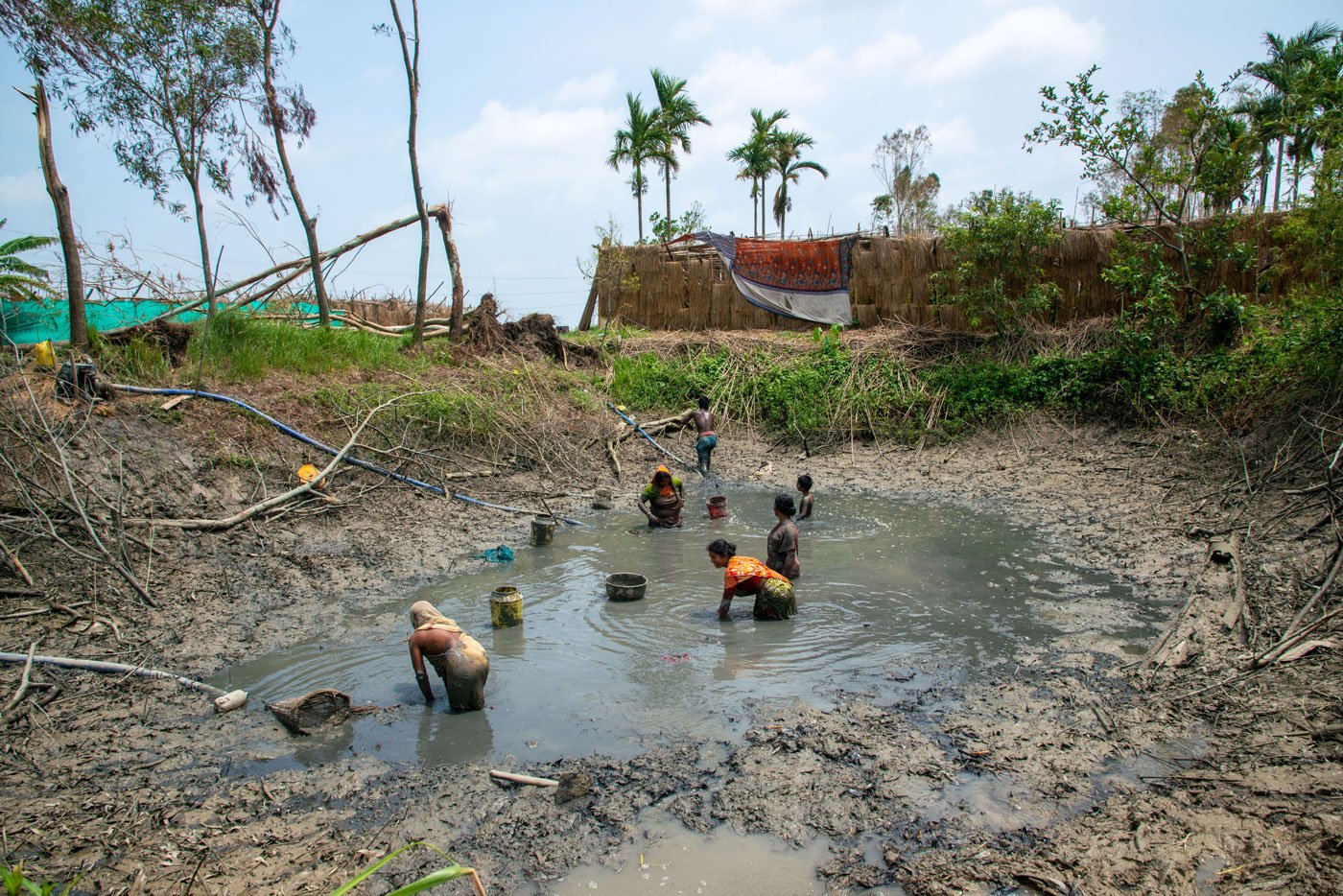
Ranjan Gayen and his family in Madhab Nagar of Kakdwip block have lost their freshwater fish farm due to the saline contamination. They are trying mud fishing to see if there were any fish below the soil, which they can then sell in the market.
We also met Pritilata Roy in Madhab Nagar. Like many women in Kakdwip, she earned a living as a domestic worker in Kolkata’s Jadavpur area, around 80 kilometres away. It was her main source of income until those jobs stopped in the last week of March, after the Covid-19 lockdown was announced. Her crop of betel leaves was ruined by Amphan’s fury. She estimates that she has lost close to Rs. 30,000.
The scale of destruction in Dakshin Kasiabad stunned us when we reached the village. The delicate betel leaf crop, a major source of income of farmers there, had been wiped out. For the people here who earned by selling fish, paddy and betel leaves in the haats in and around the village, Amphan brought in additional losses – when they were already struggling due to the closure of markets for the lockdown.
“We are betel leaf farmers since generations,” said one man, who didn’t want to give us his name. “It used to give me an income of Rs. 20,000-25,000 per month. The lockdown had knocked out our business, but Amphan has destroyed us.” The South 24 Parganas horticulture department, cited by some news reports, says the cyclone-linked loss for betel farmers in the district is an estimated Rs. 2,775 crores.
Saline water occupied swathes of agricultural land in Dakshin Kasiabad after the cyclone in May. “The water would come in earlier too, but not this far. It's not just the paddy crop that has been destroyed by the cyclone. It’s unlikely that the land will be usable anymore,” said another farmer. The harvest of his rabi crop of boro rice was already affected by the shortage of labour during the lockdown, and unseasonal rains in summer added to his problems this year – until Cyclone Amphan arrived.
In the same village, the Niyogi family is one of few in this area who rear the colourful budgerigar birds. The small birds are popular as pets, especially in Kolkata. The Niyogis sell them at the Naryanganj market, eight kilometres away. On the night of the cyclone, many of the cages broke open and the birds flew away. They were able to catch a few the next morning, the majority were gone. With that, their initial investment of Rs. 20,000 to raise the birds was wiped out.
Other losses run into lakhs. Madhab Das, a member of the managing committee of the cyclone-ravaged Manab Tirtha Primary School, says they need to raise Rs. 250,000 to rebuild the school. “We are short on funds and the monsoon will arrive soon. But the children’s education cannot be compromised. So we must keep our problems aside and rebuild it,” says Das.
In a region long ravaged by recurring storms, salinity and other disasters, many in the Sundarbans have had to do this before – start again from scratch.
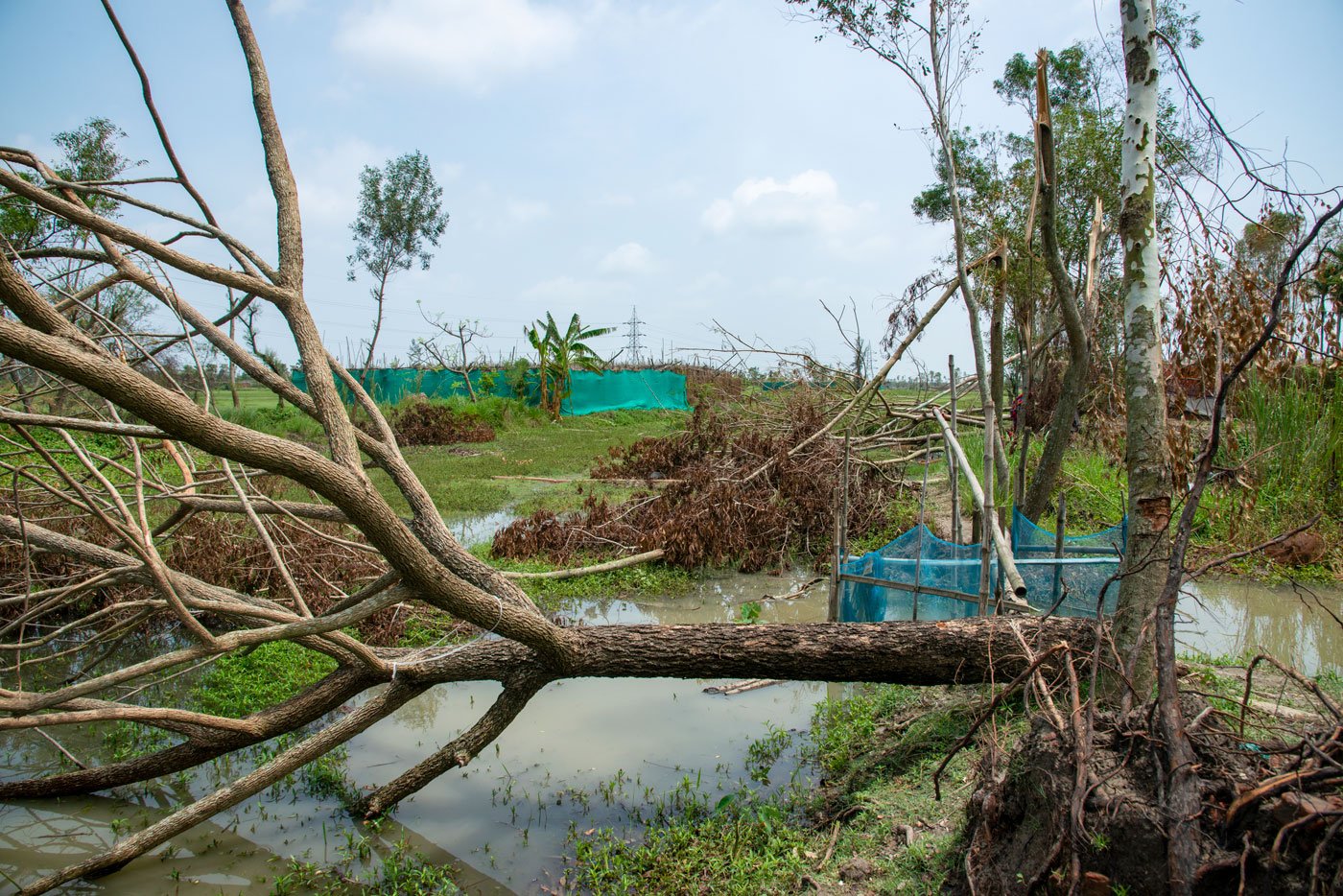
Cyclone Amphan stormed across the Sundarbans for nearly 12 hours on May 20. The super cyclonic storm that originated in the Bay of Bengal, created havoc in the Gangetic delta – uprooting trees, destroying homes and damaging farms and fisheries.
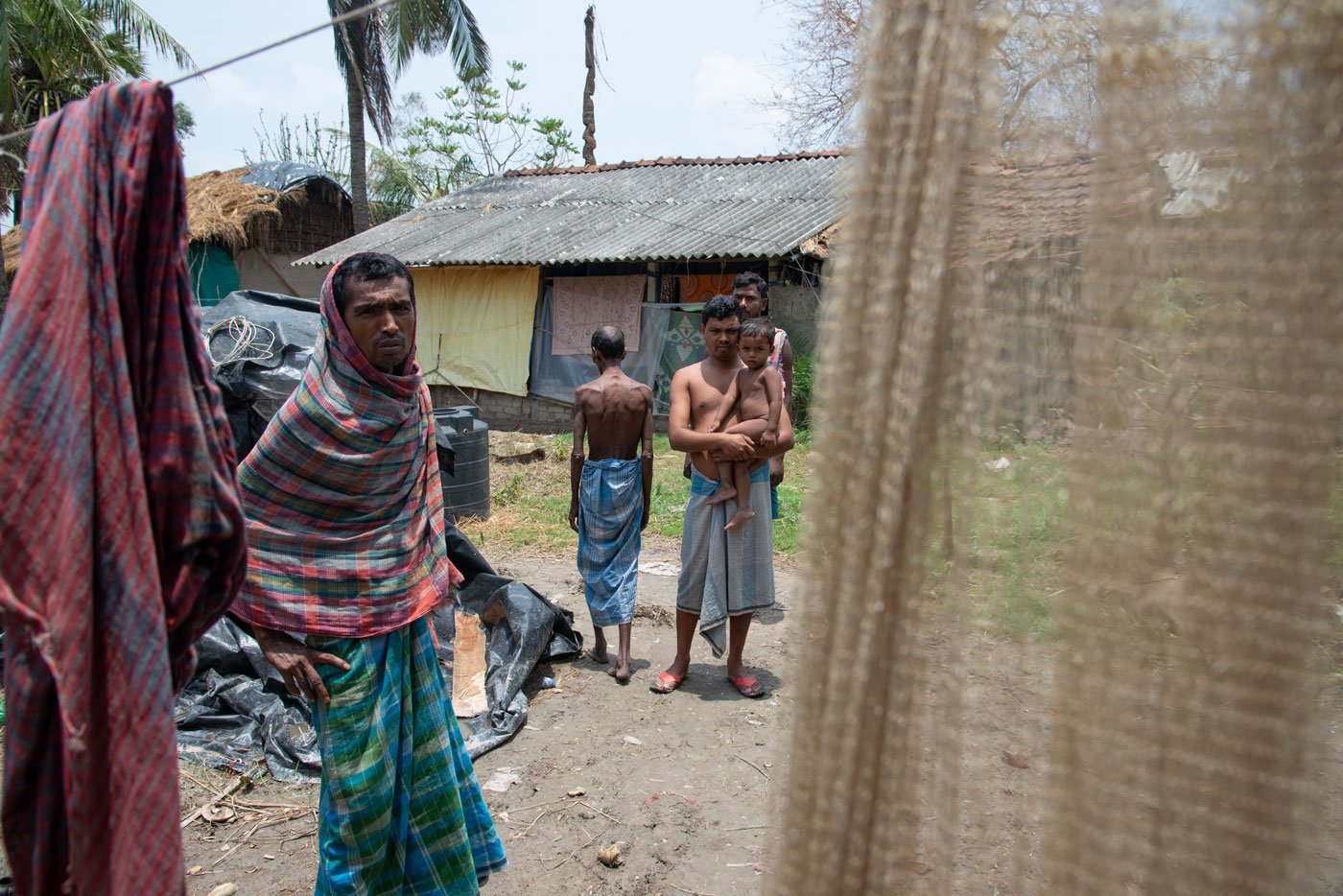
Fishermen in many parts of South 24 Parganas district lost much of their income due to restrictions on fishing activities during the Covid-19 lockdown. Then the cyclone ruined their trawlers and boats – destroying their livelihoods.
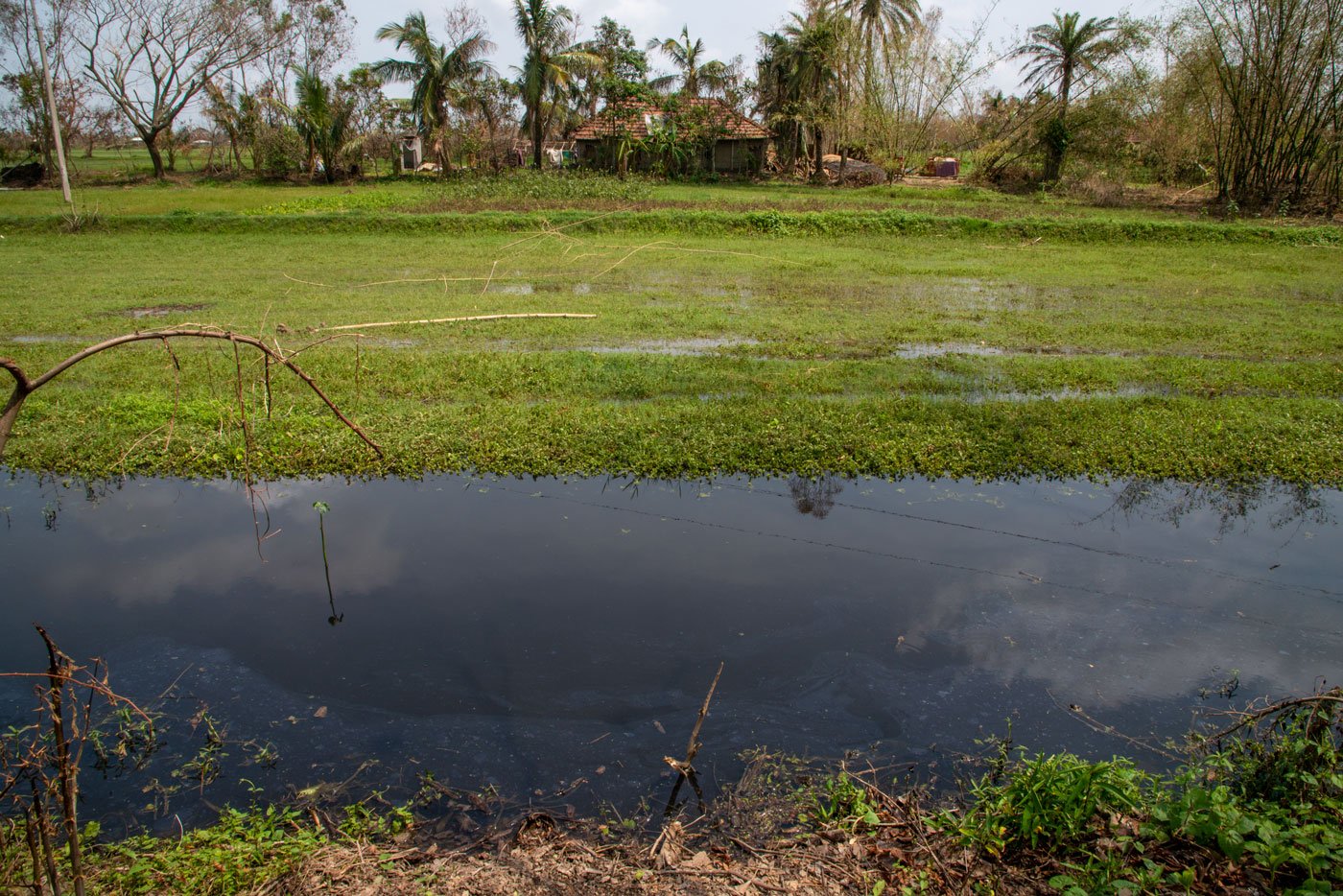
The ponds have turned black because of saline water. A farmer in Dakshin Kasiabad village in Kakdwip block said that the cyclone brought strong salt-water sprays from the sea and dehydrated the plants. “The leaves turned yellow and fell into the ponds and poisoned the water.”

Saheb Molla in Bhajna village of Patharpratima block lost his paddy as well as betel leaf crops. His house was destroyed by the cyclone too. “I don’t have enough money to rebuild, so I don’t want to talk about it,” he says.
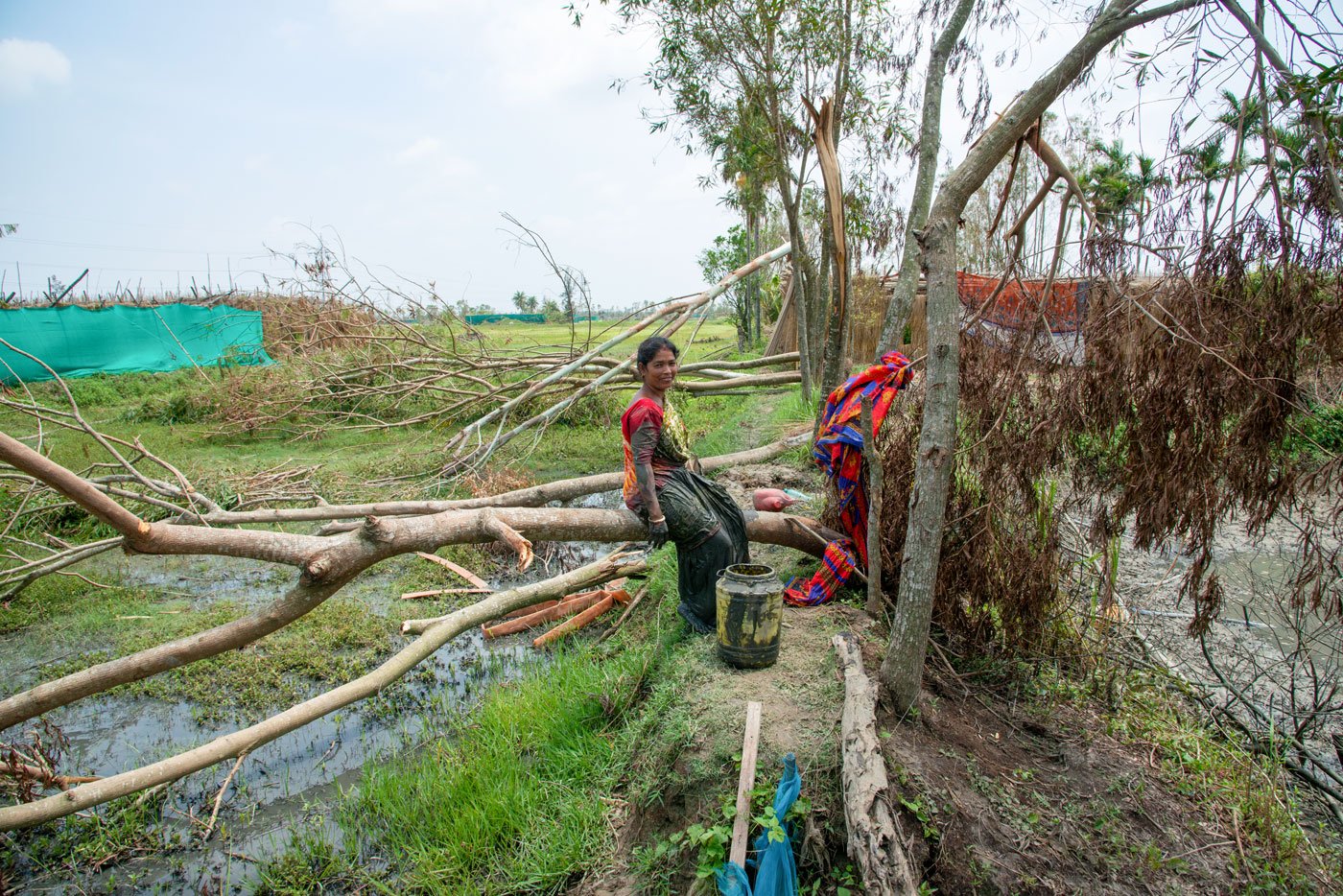
Pritilata Roy in Madhab Nagar of Kakdwip block lost her job as a domestic worker in Kolkata during the lockdown. With her main source of income gone, she was hoping to sell her small crop of betel leaves to support her family. The strong winds of the cyclone blew away the delicate plants.
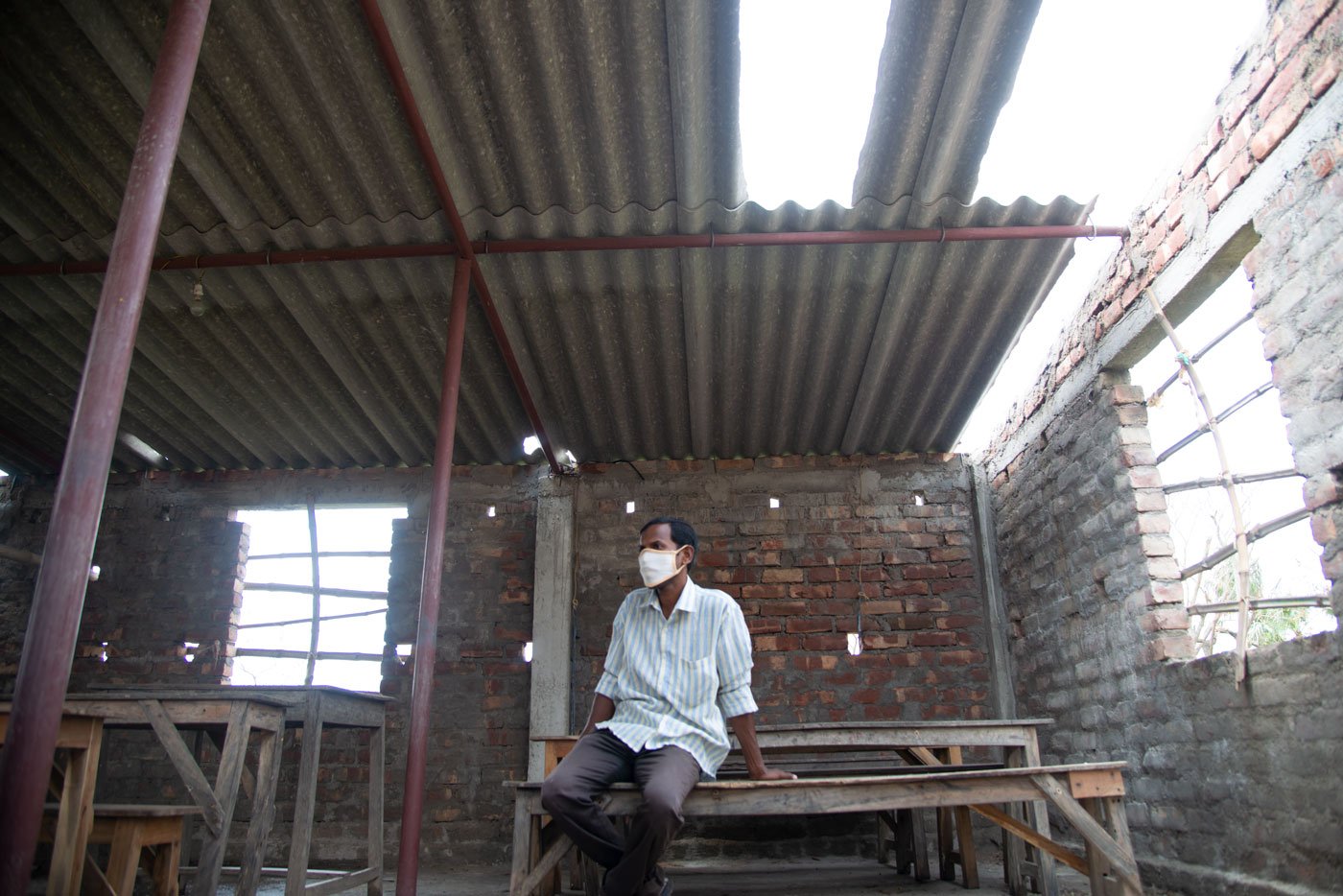
Teacher Swapan Nayek sits below the damaged roof of Manab Tirtha Primary School in Dakshin Kasiabad. He is one of seven teachers at the private school, which has over 100 students from nearby villages. Besides the roof, Amphan damaged the classrooms on the ground floor.
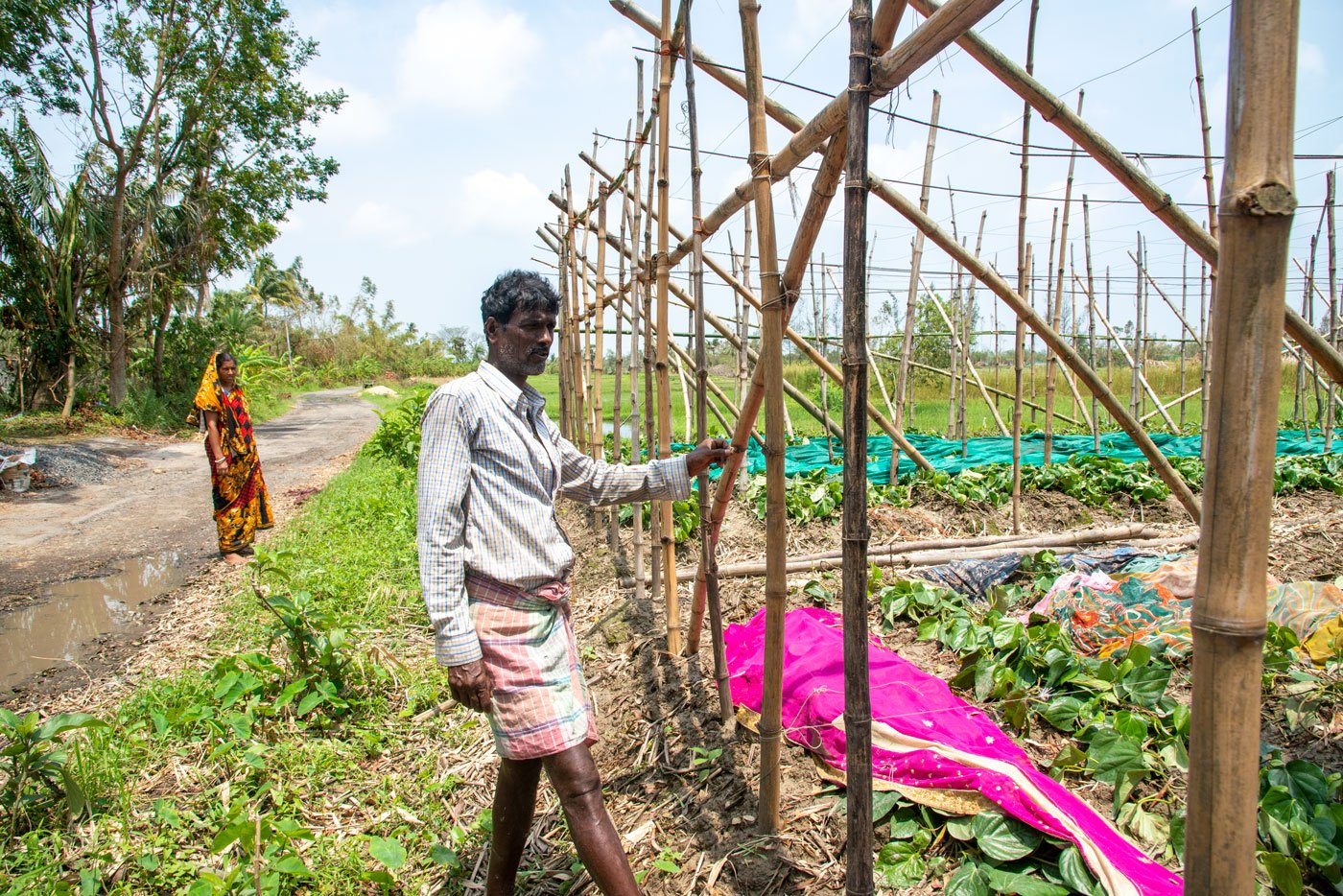
A farmer surveys his wrecked boroj, the bamboo structure protecting his betel leaf crop, in Bapuji gram panchayat , Kakdwip block. “All my investment has gone. Reconstruction is a huge task. I’ll need 7-8 labourers to rebuild it. I have neither money nor workers because of the lockdown,” he says.
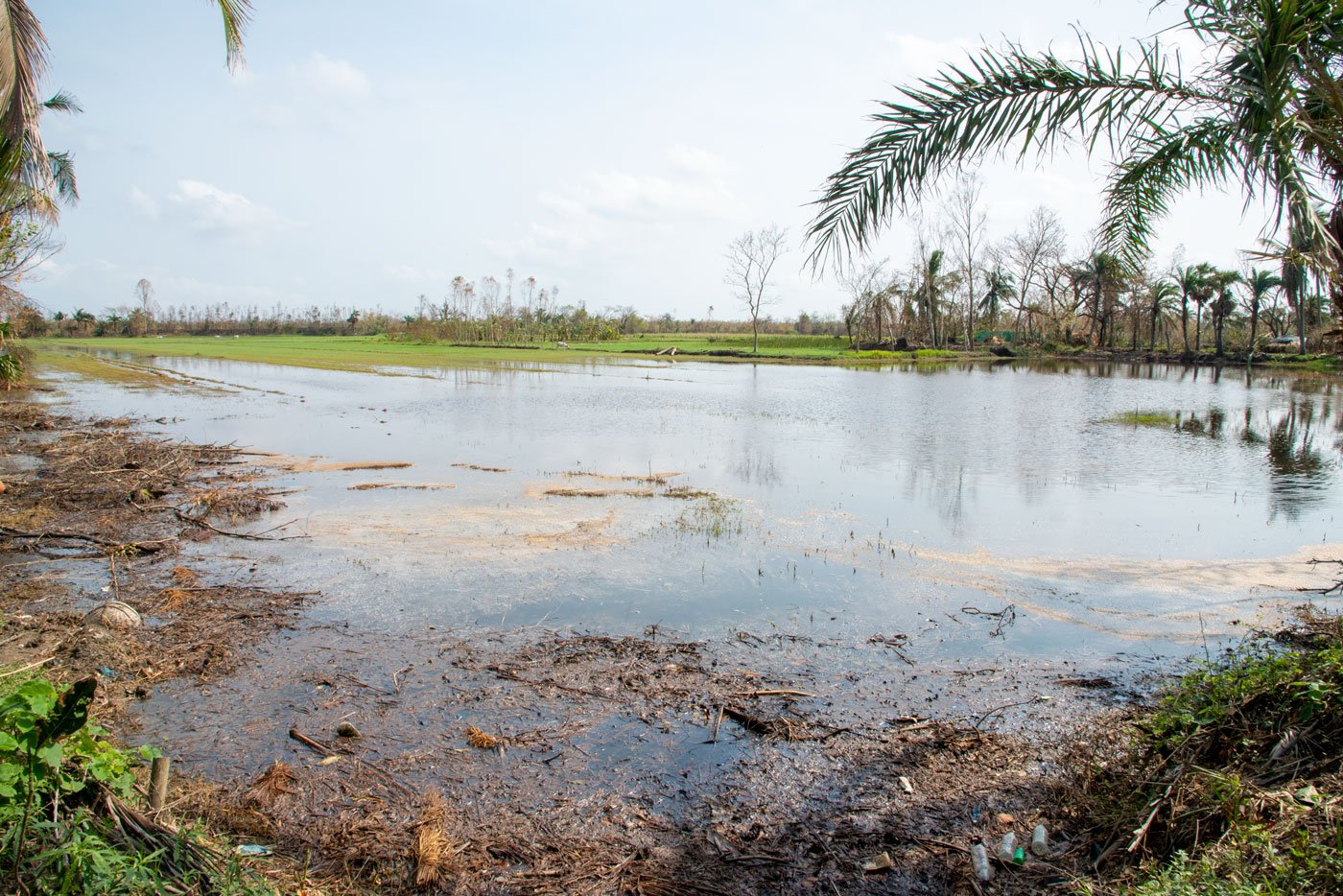
Salt water from the sea has flooded the farms in Dakshin Kasiabad village, making them look like lakes. Crops have been destroyed and the soil quality has deteriorated. The villagers feel that cultivation is not possible here now.
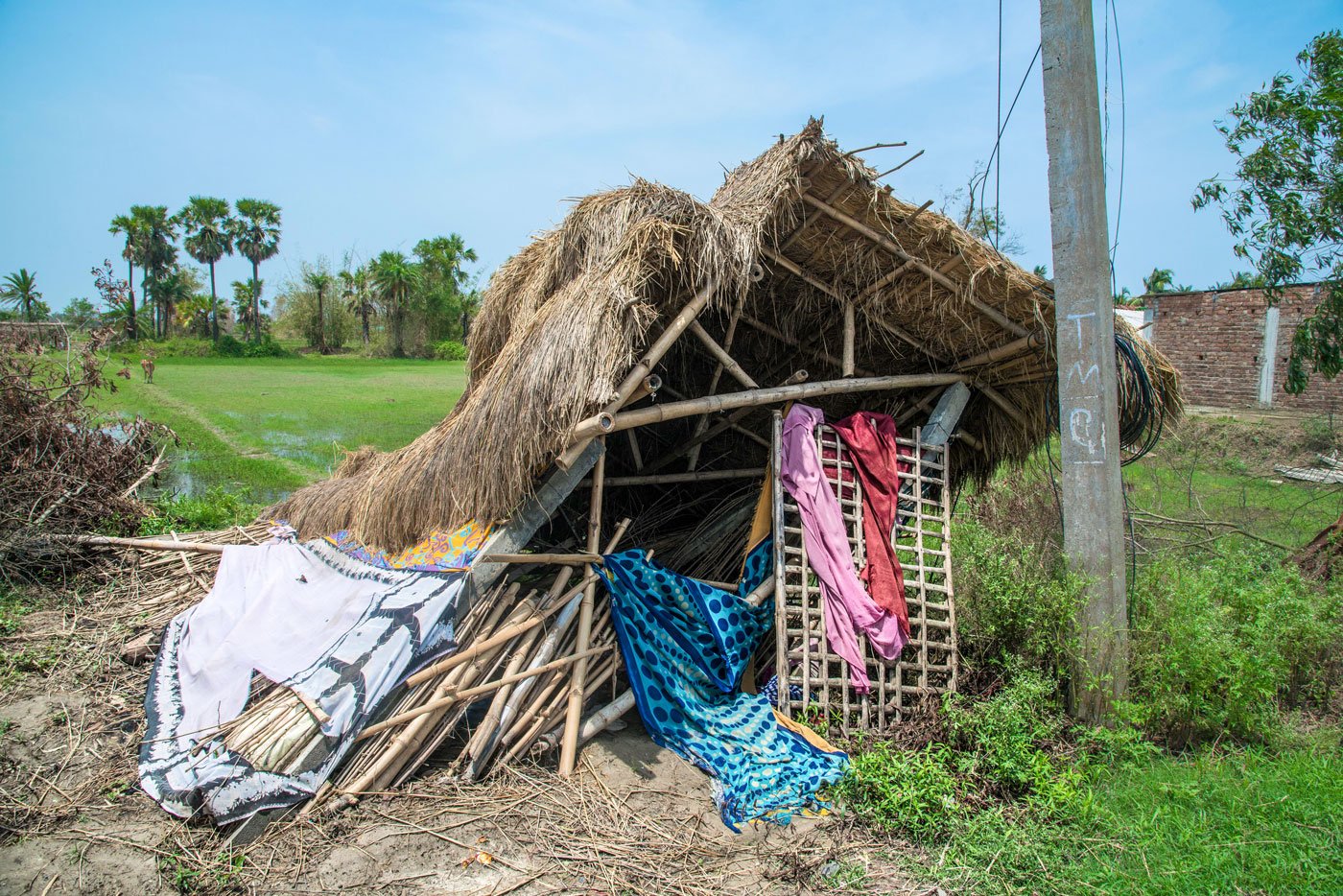
The trail of Amphan's destruction is visible everywhere in Kakdwip – like this battered barber shop.
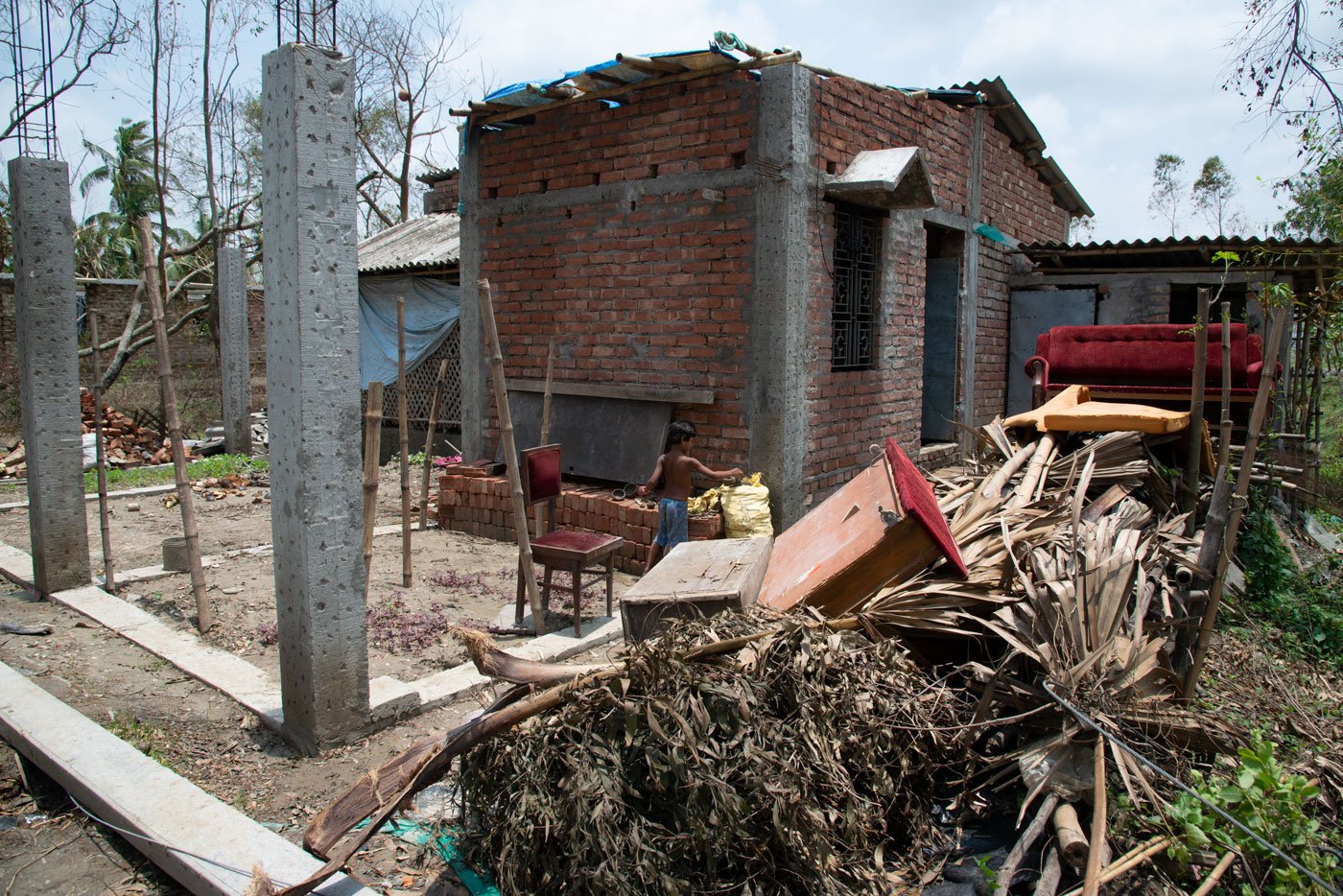
A little girl plays in front of her ravaged home in the Netaji panchayat area of Kakdwip block.
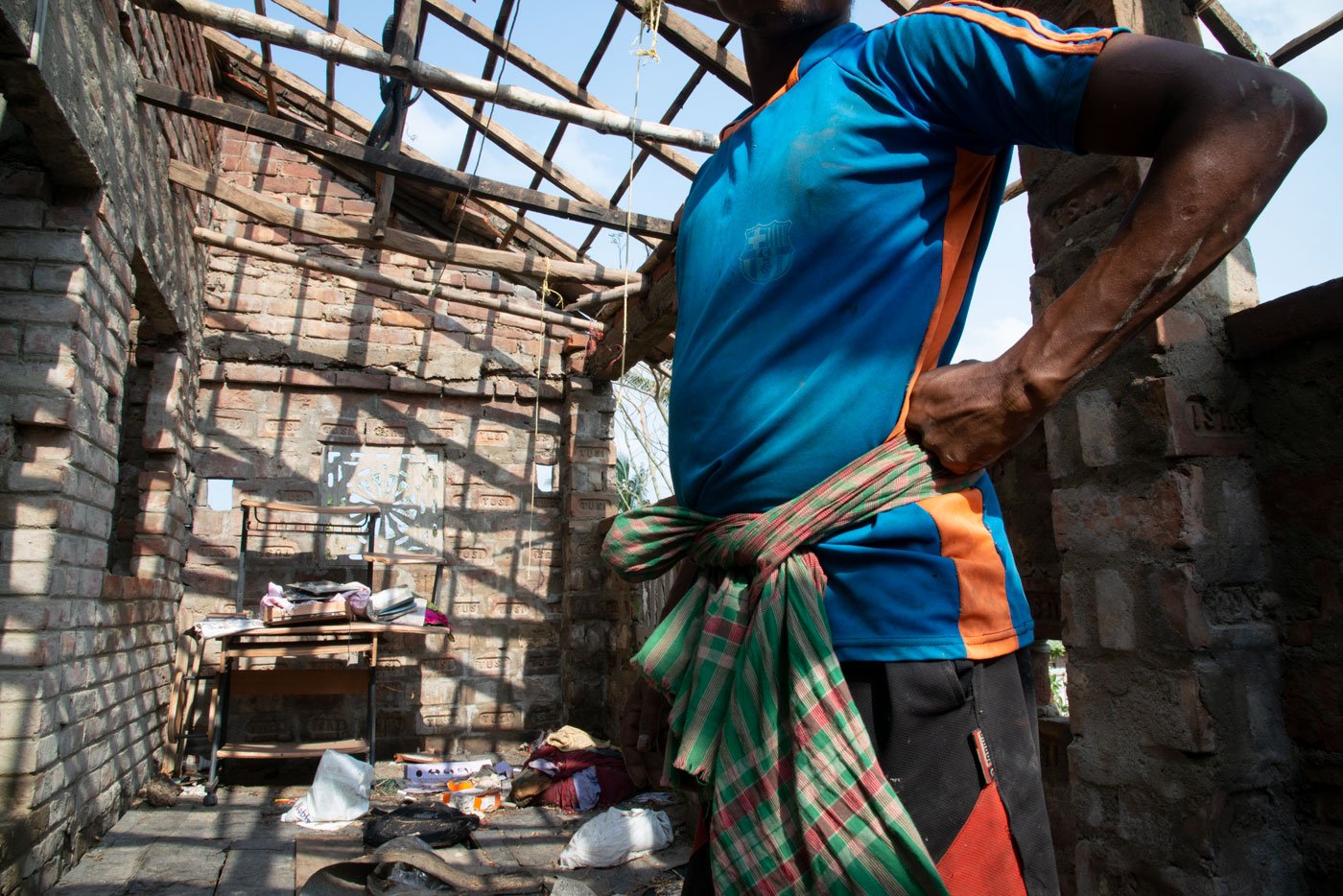
A few families in Dakshin Kasiabad have started rebuilding their cyclone-hit properties. “We can’t wait for the government’s aid to arrive. It’s always better to start on our own,” says a labourer in the village.

“I built the roof of this house recently. Now it's gone. I will have to build it again. But it will take a lot of time,” says Mohammed Kasem from Bhajna village.
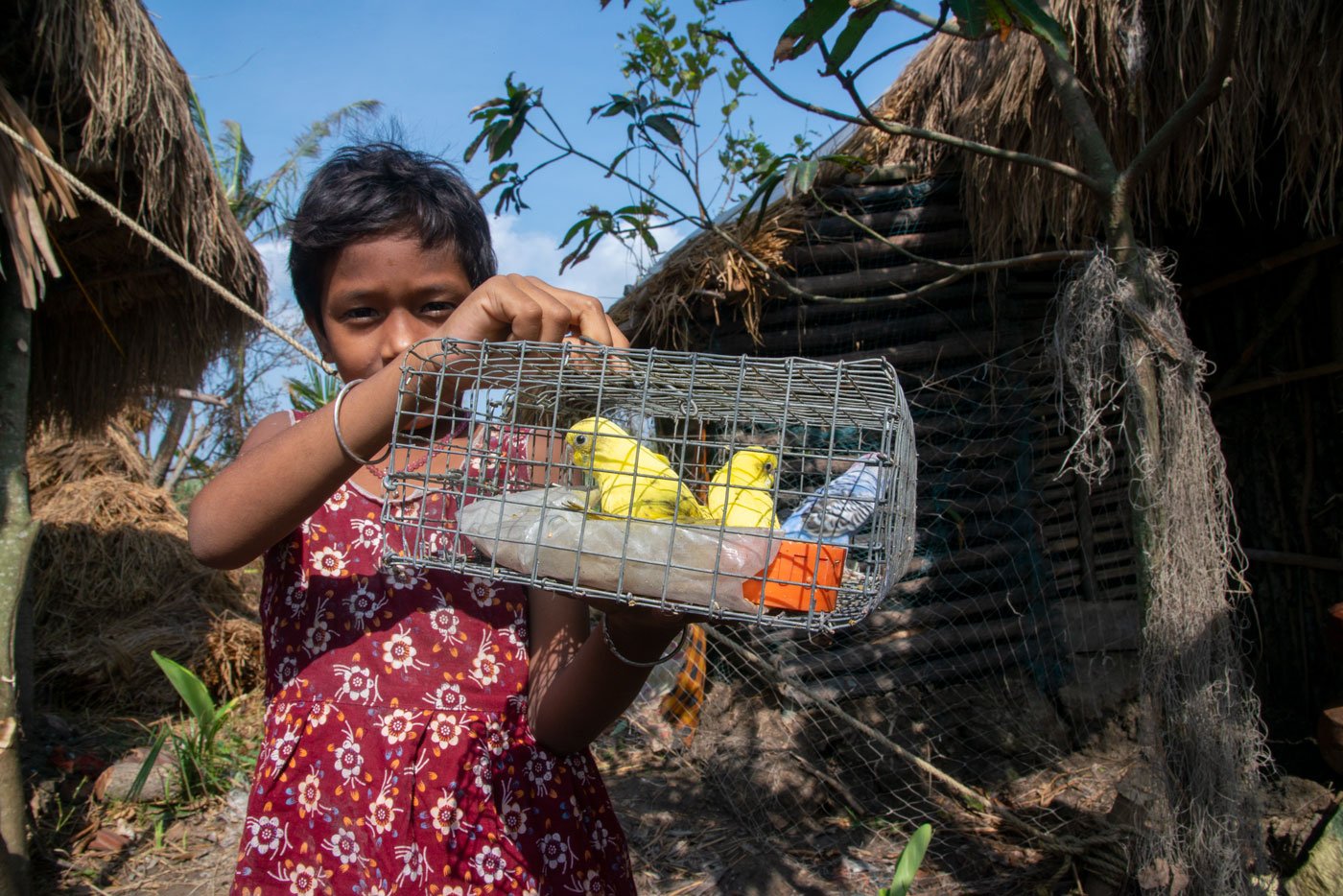
Munia in Dakshin Kasiabad with the budgerigars she managed to re-capture after they flew from their cages on the night of the storm. Her family is one of few in the village who raise these birds for sale as pets in nearby markets. The cyclone damaged many cages, and many birds had escaped.
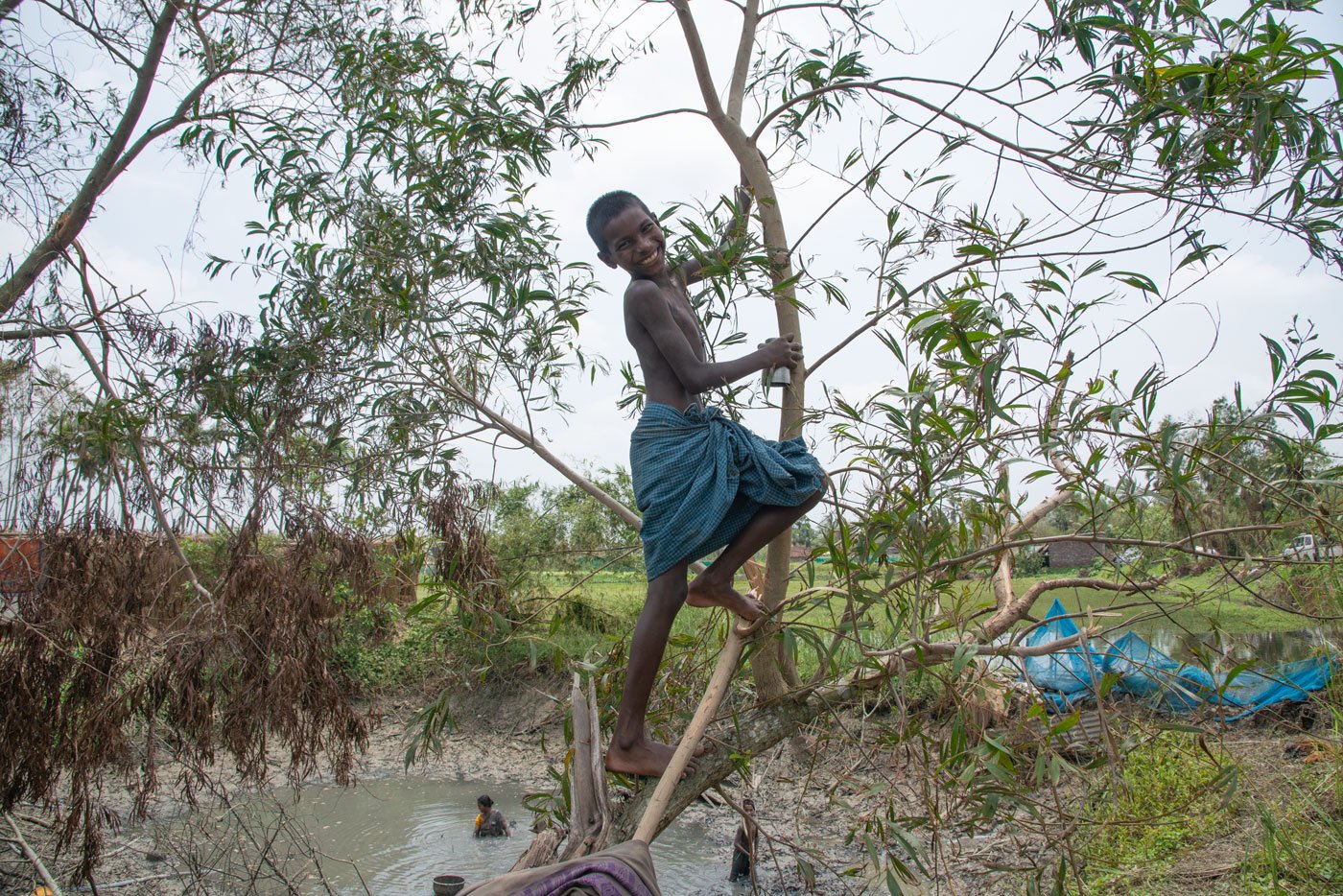
In Madhab Nagar, the torrential rain brought by the cyclone drenched Chotu Gayen’s books. But his spirits are high. He says, “Accidents happen. I’m not too bothered about it.”

A woman walks on a mud bund near Dakshin Kasiabad. Half of the paddy field next to it is under water, while the other half survived the flooding.
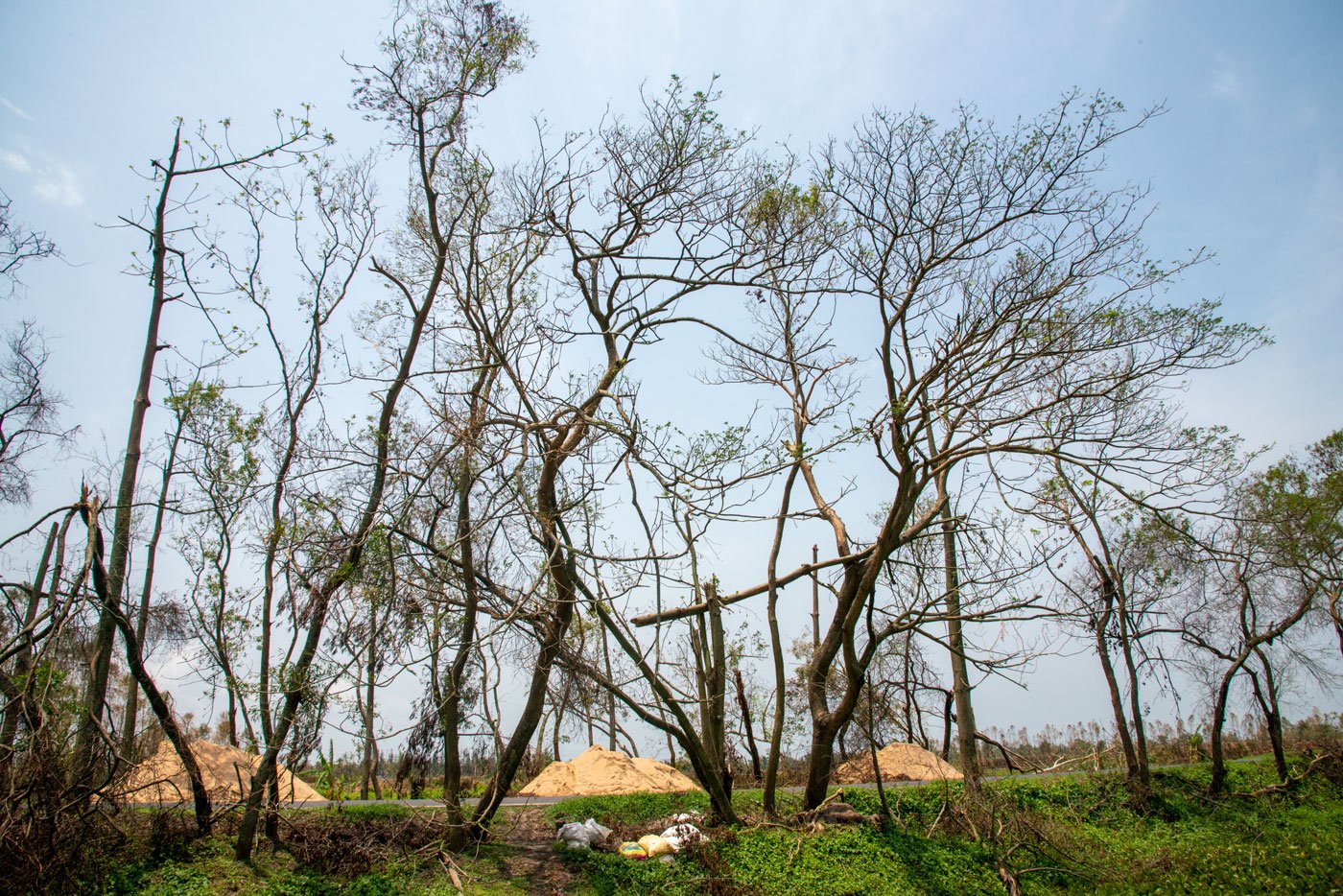
Trees on the road to Dakshin Kasiabad village, their leaves taken away by the cyclone.

